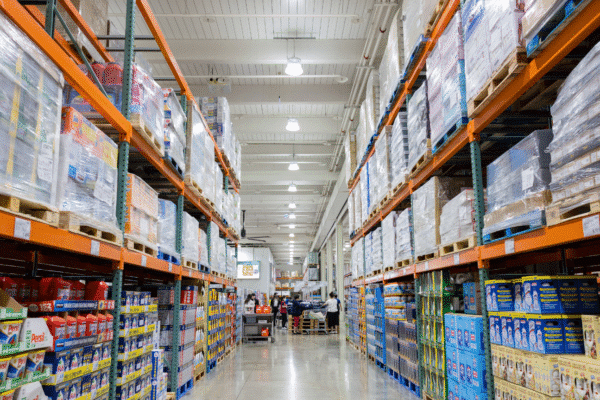
10 lessons on earnouts – the inside scoop from M&A Insiders
29.11.2023Anyone in the industry knows there’s no formal qualification in M&A. Everything you learn, you learn on the job. There are highs, there are lows, and it can be lonely at times. That’s why we’re intent on bringing together the M&A community to learn in the best way possible – from each other. Our most recent event brought together 25 dealmakers who, following a Q&A with seasoned dealmaker Ian Goodwin, shared their stories, insights and lessons on earnouts.
Firstly, what are earnouts?
Earnouts are a type of deal structure, where part of the sale price is contingent on performance after the sale. It can be a helpful lever if, for example, there is disagreement on the future earnings potential of the business being bought, or if the acquirer wishes to retain certain talent. Earnouts are seen most frequently in high growth industries such as tech but, in an uncertain economic environment, they are becoming more common across the mid-market.
While the jury was out on the use of earnouts to drive successful acquisitions, our guests around the table shared their advice and lessons learned.
10 lessons on earnouts
1: The length of the earnout is important
The consensus around the table was that 1-2 years was the best length for an earnout, dependent on the buyer’s objectives. It’s important to focus on moving towards integration as quickly as possible.
2: Earnouts can come with unintended consequences
An earnout incentivises founders on profit attainment and achieving certain goals by the end of the earnout period. This could drive short-term behaviours that are detrimental to the long-term performance of the company such as cost-cutting in the interests of profitability. Owners of acquired companies could also be deterred from investing in new technology, people or processes.
Earnouts should be structured to drive behaviour that will benefit the organisation as a whole.
3: Think beyond the earn out
If your earnout is focused on retaining key talent, very soon, it would be valuable to consider whether you’d like to retain them longer term. And, if you do, you will need to address the ‘post-exit cliff’.
Understanding what drives your business owner and revisiting this at regular intervals with them (it might change) will help. Maybe they are looking for learning and development, new leadership opportunities, overseas experience, a sabbatical. Find out and then build this into their retention plan.
And, if you think the key talent will leave after the earnout, think about the succession planning you need to put in place to mitigate the risks associated with this.
4: Align the earnout to KPIs
If you’re going to do an earn out, make sure it’s aligned with your KPIs. For example, if you’re buying a Professional Services business, your earnout should be structured to drive team retention. Or, if the future value of your acquisition hinges on delivery of particular projects or retention of particular customers, consider how to build these things into the earnout.
5: Earnouts are not always a ‘set and forget’ situation

If things don’t go well during the earnout period, leaders can become demotivated and disenfranchised. Particularly in circumstances where the cause of the shortfall may be outside their control (COVID anyone?). Buyers may wish to proactively renegotiate earnouts to ensure the team continues to be motivated to achieve the agreed outcomes.
Ian Goodwin and InterFinancial Executive Chair Sharon Doyle)
6: Retention bonuses for key talent should be shared between the buyer and the seller
Sharing the retention bonuses is a pragmatic approach which benefits both the buyer and the seller. The buyer because they get to retain key people, and the seller because they’ve received a benefit from the sale, and because they may still have a vested interest in deferred payments via the earnout.
7: Look beyond the owners
Most earnouts are focused on retention of the most senior leaders/owners of an acquisition. But it’s important to consider the next level of management too. Are they important to retain? And if so, how can they be incentivised to do so?
8: Think beyond financial performance
Earnouts are often purely focused on financial performance but cultural alignment can make or break the success of the acquisition. It’s important to consider what strategies are being put in place to ensure this alignment exists and that integration is a success.
9: Advisors are the ultimate shock absorbers
A business owner without an advisor is not necessarily a good thing. It’s likely advisors will present a more accurate view of the business for sale and they can also act as a shock absorber during difficult conversations. This will help to preserve potential employer/employee relationships should the deal go ahead. From the get-go, recommend the shareholders of your target business has an advisor.
10: Don’t be afraid of an owner who deeply understands their value
While an owner who understands their company’s value drivers might be a tougher negotiator, they’ll likely deliver greater value to you in the end. If someone has taken the time to understand what buyers are looking for, built a business that satisfies these criteria, and found the right buyer with a strategic reason for investing, odds are the business is going to be a good fit. As the old adage goes, “you get what you pay for”.
Interested in earnouts in particular, or learning more on topics like this? Subscribe to our monthly e-news at the bottom of this page or reach out for a chat.








